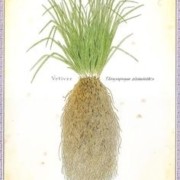In some parts of the world ‘to eat’ literally means ‘to eat rice’. One of the most important food grains, rice is a staple food for almost half of the world’s population, supplying as much as half of the daily calories.
But, rice is also an important beautifying ingredient. For centuries, Asian women have used rice water to beautify their face, body, and hair. Traditionally, female rice farmers in China, Japan, and other southeast Asian countries used to bathe and wash in the water used for cleaning rice.
The Yao ethnic women from the village of Huangluo in China are testament to this tradition. With their average hair length of about 6 feet, these women made it to the Guinness Book of World Records as the “world’s longest hair village” (Read more here). Plus these women do not have grey hair till the late 80s. The Yao women believe that the fermented rice water, which they use to cleanse their hair, is what helps to keep their hair long, dark, and clean. Rice water enables these women to de-tangle and manages their long hair, which they wrap around their heads in an elaborate high bun that is often described with names such as ‘gazing god’s bun’ or the ‘cloud bun’.
Rice Water For Hair & Skin: Evidence & Benefits
Rice water has amazing hair and skin benefits. Recent research has shown that rice water exhibits hair care effects, such as decreasing surface friction and improving hair elasticity. Rice water has inositol, a carbohydrate, that can repair damaged hair, as well as protect it from damage. Specialized imaging technique shows that inositol stays inside the hair even after rinsing, offering continuing hair protection and beautifying effects.
So, Rinsing or washing your hair with rice water will improve manageability and protect it from future damage. In addition, the amino acids, vitamins, and minerals in the rice water strengthen the hair roots, add volume and sheen and make hair feel thicker, silky, and smooth. These awesome benefits explain the 6 feet, healthy, long, and beautiful hair of the Yao women.
Not limited to hair, rice water also has many skin benefits. Due to its cooling and soothing effects on the skin, rice water is often prescribed by ayurvedic practitioners as an effective ointment to cool off inflamed skin.
Rice water also has moisturizing, antioxidant, and healing properties that help to improve circulation, prevent or fade age-related spots, and ease inflammation to give you healthy, better moisturized, and clear skin. As long as it’s left on the skin, rice water is even believed to offer mild protection from the sun.
Fermented Rice Water
The effects of rice water are further enhanced if it is left to ferment. Fermented rice water is rice water that is left to ferment and has gone slightly sour. It is rich in antioxidants, minerals, B vitamins, vitamin E, and traces of pitera, a substance produced during the fermentation process. ‘Pitera’ has grown in popularity recently, and is touted as the anti-aging elixir due to its ability to promote cell regeneration, and help skin stay young and beautiful.
This ferment rice water can be used as a face cleanser, skin toner as well as a hair rinse. The nutrients in the fermented rice water are believed to shrink pores, reduce fine lines, and tighten and brighten your skin – this is a perfect recipe to look radiant and youthful.
Washing or rinsing your hair with fermented rice water is certainly better than rinsing with unfermented or plain rice water. Fermentation lowers the pH of the liquid, and this is similar to our hair’s pH, which is also on the lower side (slightly acidic). So, this slightly acidic pH plus the added nutrients through the fermentation process help restore hair’s pH balance, stimulate blood flow to the scalp, nourish hair follicles to promote healthy hair growth, and improve the overall condition of hair.
Making Rice Water: Plain & Fermented
To enjoy these wonderful beauty benefits of rice water, all you have to do is just collect the water that you use to rinse your rice. And if you don’t want to cook the rice then just grind the leftover rice to make a body scrub or face mask.
To make rice water, you will need:
- 1/2 cup uncooked rice (brown, white long grain, white short grain, jasmine, or whatever you have)
- 2 cups water
To make:
- To make rice water, first, rinse the rice with about a cup of water to remove any dirt or impurities.
- Then, place 1/2 cup of uncooked rice in a bowl and cover with water. Let the rice soak for about an hour or so. Swirl it around and lightly knead it until the water turns cloudy. This will help the vitamins and minerals seep into the water, creating a nourishing rinse for your hair and skin.
- Plain Rice Water: Now strain out the rice water into a clean bowl. Your rice water is ready to use.
- You can either use this water for your hair or face or let it ferment for enhanced benefit.
- To Ferment: Once you have collected your rice water, leave it at room temperature for a day or until it turns slightly sour, implying that it has started to ferment. It can take anywhere from 24 to 48 hours, depending on how warm it is. So warmer the room temperature faster the fermentation process.
- To decrease the fermentation time, you can leave the rice sitting in the water and strain it once it has fermented.
- Your fermented rice water is ready.
- Store it in the refrigerator and it will last 4 to 5 days. Remember to shake the refrigerated rice water container before using it.
- Boiling Method: You can also boil the rice to extract rice water. For this, boil the rice using more water than you would normally do. Once it starts boiling take out the excess water and use it; or you can also let the rice fully cook, strain, and use that excess water. Let the rice water cool down and it’s ready to use. You can store the remaining amount in the fridge for 4 to 5 days.








